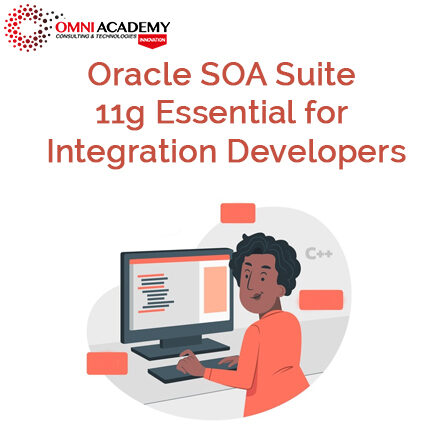CCNP 350 701 Training
These courses lay the foundation for a viewer looking to dive into the world of Cisco network security. The courses cover everything you need to know about network security, cloud security, content security, endpoint protection and detection, secure network access, and visibility and enforcement
What you’ll learn
-
Network security
-
Content security
-
Secure network access
-
SDN and Network Automation Concepts
-
Cloud Security
Course Content:
Module1L Security Concepts
1.1 Explain common threats against on-premises and cloud environments
1.1.a On-premises: viruses, trojans, DoS/DDoS attacks, phishing, rootkits, man-in-the-middle attacks, SQL injection, cross-site scripting, malware
1.1.b Cloud: data breaches, insecure APIs, DoS/DDoS, compromised credentials
1.2 Compare common security vulnerabilities such as software bugs, weak and/or hardcoded passwords, SQL injection, missing encryption, buffer overflow, path traversal, cross-site scripting/forgery
1.3 Describe functions of the cryptography components such as hashing, encryption, PKI, SSL, IPsec, NAT-T IPv4 for IPsec, pre-shared key and certificate based authorization
1.4 Compare site-to-site VPN and remote access VPN deployment types such as sVTI, IPsec, Cryptomap, DMVPN, FLEXVPN including high availability considerations, and AnyConnect
1.5 Describe security intelligence authoring, sharing, and consumption
1.6 Explain the role of the endpoint in protecting humans from phishing and social engineering attacks
1.7 Explain North Bound and South Bound APIs in the SDN architecture
1.8 Explain DNAC APIs for network provisioning, optimization, monitoring, and troubleshooting
1.9 Interpret basic Python scripts used to call Cisco Security appliances APIs
Module2: Network Security
2.1 Compare network security solutions that provide intrusion prevention and firewall capabilities
2.2 Describe deployment models of network security solutions and architectures that provide intrusion prevention and firewall capabilities
2.3 Describe the components, capabilities, and benefits of NetFlow and Flexible NetFlow records
2.4 Configure and verify network infrastructure security methods (router, switch, wireless)
2.4.a Layer 2 methods (Network segmentation using VLANs and VRF-lite; Layer 2 and port security; DHCP snooping; Dynamic ARP inspection; storm control; PVLANs to segregate network traffic; and defenses against MAC, ARP, VLAN hopping, STP, and DHCP rogue attacks
2.4.b Device hardening of network infrastructure security devices (control plane, data plane, management plane, and routing protocol security)
2.5 Implement segmentation, access control policies, AVC, URL filtering, and malware protection
2.6 Implement management options for network security solutions such as intrusion prevention and perimeter security (Single vs. multidevice manager, in-band vs. out-of-band, CDP, DNS, SCP, SFTP, and DHCP security and risks)
2.7 Configure AAA for device and network access (authentication and authorization, TACACS+, RADIUS and RADIUS flows, accounting, and dACL)
2.8 Configure secure network management of perimeter security and infrastructure devices (secure device management, SNMPv3, views, groups, users, authentication, and encryption, secure logging, and NTP with authentication)
2.9 Configure and verify site-to-site VPN and remote access VPN
2.9.a Site-to-site VPN utilizing Cisco routers and IOS
2.9.b Remote access VPN using Cisco AnyConnect Secure Mobility client
2.9.c Debug commands to view IPsec tunnel establishment and troubleshooting
Module3 : Securing the Cloud
3.1 Identify security solutions for cloud environments
3.1.a Public, private, hybrid, and community clouds
3.1.b Cloud service models: SaaS, PaaS, IaaS (NIST 800-145)
3.2 Compare the customer vs. provider security responsibility for the different cloud service models
3.2.a Patch management in the cloud
3.2.b Security assessment in the cloud
3.2.c Cloud-delivered security solutions such as firewall, management, proxy, security intelligence, and CASB
3.3 Describe the concept of DevSecOps (CI/CD pipeline, container orchestration, and security
3.4 Implement application and data security in cloud environments
3.5 Identify security capabilities, deployment models, and policy management to secure the cloud
3.6 Configure cloud logging and monitoring methodologies
3.7 Describe application and workload security concepts
Module4: Content Security
4.1 Implement traffic redirection and capture methods
4.2 Describe web proxy identity and authentication including transparent user identification
4.3 Compare the components, capabilities, and benefits of local and cloud-based email and web solutions (ESA, CES, WSA)
4.4 Configure and verify web and email security deployment methods to protect on-premises and remote users (inbound and outbound controls and policy management)
4.5 Configure and verify email security features such as SPAM filtering, antimalware filtering, DLP, blacklisting, and email encryption
4.6 Configure and verify secure internet gateway and web security features such as blacklisting, URL filtering, malware scanning, URL categorization, web application filtering, and TLS decryption
4.7 Describe the components, capabilities, and benefits of Cisco Umbrella
4.8 Configure and verify web security controls on Cisco Umbrella (identities, URL content settings, destination lists, and reporting)
Module5: Endpoint Protection and Detection
5.1 Compare Endpoint Protection Platforms (EPP) and Endpoint Detection & Response (EDR) solutions
5.2 Explain antimalware, retrospective security, Indication of Compromise (IOC), antivirus, dynamic file analysis, and endpoint-sourced telemetry
5.3 Configure and verify outbreak control and quarantines to limit infection
5.4 Describe justifications for endpoint-based security
5.5 Describe the value of endpoint device management and asset inventory such as MDM
5.6 Describe the uses and importance of a multifactor authentication (MFA) strategy
5.7 Describe endpoint posture assessment solutions to ensure endpoint security
5.8 Explain the importance of an endpoint patching strategy
Module6 Secure Network Access, Visibility, and Enforcement
6.1 Describe identity management and secure network access concepts such as guest services, profiling, posture assessment and BYOD
6.2 Configure and verify network access device functionality such as 802.1X, MAB, WebAuth
6.3 Describe network access with CoA
6.4 Describe the benefits of device compliance and application control
6.5 Explain exfiltration techniques (DNS tunneling, HTTPS, email, FTP/SSH/SCP/SFTP, ICMP, Messenger, IRC, NTP)
6.6 Describe the benefits of network telemetry
6.7 Describe the components, capabilities, and benefits of these security products and solutions
6.7.a Cisco Stealthwatch
6.7.b Cisco Stealthwatch Cloud
6.7.c Cisco pxGrid
6.7.d Cisco Umbrella Investigate
6.7.e Cisco Cognitive Threat Analytics
6.7.f Cisco Encrypted Traffic Analytics
6.7.g Cisco AnyConnect Network Visibility Module (NVM)
Course Prerequisites
To ensure that you can successfully undertake training in the Implementing and Operating Cisco Security Core Technologies (SCOR) course, the following are the minimum required prerequisites:
- Basic understanding of networking and network security principles.
- Familiarity with Ethernet and TCP/IP networking.
- Working knowledge of the Windows operating system and Cisco IOS networking and concepts.
- Familiarity with basics of networking security concepts such as firewall, VPN, and intrusion prevention.
- Understanding of common security threats and vulnerabilities.
- Knowledge of IP addressing and subnetting.
Target Audience
- Network Security Engineers
- Security Administrators and Analysts
- Cloud Security Specialists
- IT Managers responsible for security
- Cybersecurity Consultants
- Network and Systems Engineers looking to specialize in security
- Cisco Integrators and Partners
- Network Architects and Designers seeking security expertise
- Security Operations Center (SOC) staff
- Compliance and Risk Management Officers
- IT Professionals seeking Cisco CCNP Security certification
Career Path
- Network Security Engineer
- Role: Design, implement, and manage security solutions to protect organizational networks and systems.
- Skills Required: Network security protocols, firewall management, intrusion prevention, threat mitigation, VPN configuration.
- Typical Employers: Large enterprises, IT services companies, government agencies.
- Career Progression: Can lead to roles such as Senior Network Security Engineer or Security Architect.
- Security Consultant
- Role: Provide expert advice on security solutions, conduct security assessments, and develop security policies.
- Skills Required: Security risk assessment, penetration testing, compliance standards, incident response.
- Typical Employers: Consulting firms, managed security service providers (MSSPs), independent contractor.
- Career Progression: Can advance to positions like Senior Security Consultant or Chief Information Security Officer (CISO).
- Security Analyst
- Role: Monitor networks for security breaches, investigate incidents, and perform vulnerability management.
- Skills Required: Security information and event management (SIEM), threat analysis, incident response, malware analysis.
- Typical Employers: Security operations centers (SOCs), financial institutions, healthcare organizations.
- Career Progression: Can move up to roles like Senior Security Analyst or SOC Manager.
- Systems Engineer (Security)
- Role: Integrate and support security systems within an organization’s IT infrastructure.
- Skills Required: System hardening, security patch management, endpoint security, secure system configuration.
- Typical Employers: IT departments, cloud service providers, software companies.
- Career Progression: Can grow into positions such as Senior Systems Engineer or Security Operations Manager.
- Security Architect
- Role: Design and oversee the implementation of secure network architectures.
- Skills Required: Network design, security frameworks, advanced threat detection, security policy development.
- Typical Employers: Large corporations, IT consulting firms, cybersecurity vendors.
- Career Progression: Can elevate to roles like Chief Security Architect or Director of Cybersecurity.
International Students Fees: USD650$
Job Interview Preparation (Soft Skills Questions & Answers)
Tough Open-Ended Job Interview Questions What to Wear for Best Job Interview Attire
Job Interview Question- What are You Passionate About?
How to Prepare for a Job Promotion Interview
Stay connected even when you’re apart



Internships, Freelance and Full-Time Work opportunities


Flexible Class Options
Week End Classes For Professionals SAT | SUN
Corporate Group Training Available
Online Classes – Live Virtual Class (L.V.C), Online Training
CCNA + CCNP (2 in 1) Course
CCNA Routing & Switching Certification
CCIE VPN Routing Switching Course
CISCO New CCNA RS 200 125 Complete Course
CCNA + CCNP (2 in 1) Course
CCNA Routing & Switching Certification
CompTIA Security+ Certification Course
A+ Certification – Computer Networking Course
CCNA Cloud Certification Training








 WhatsApp Us
WhatsApp Us